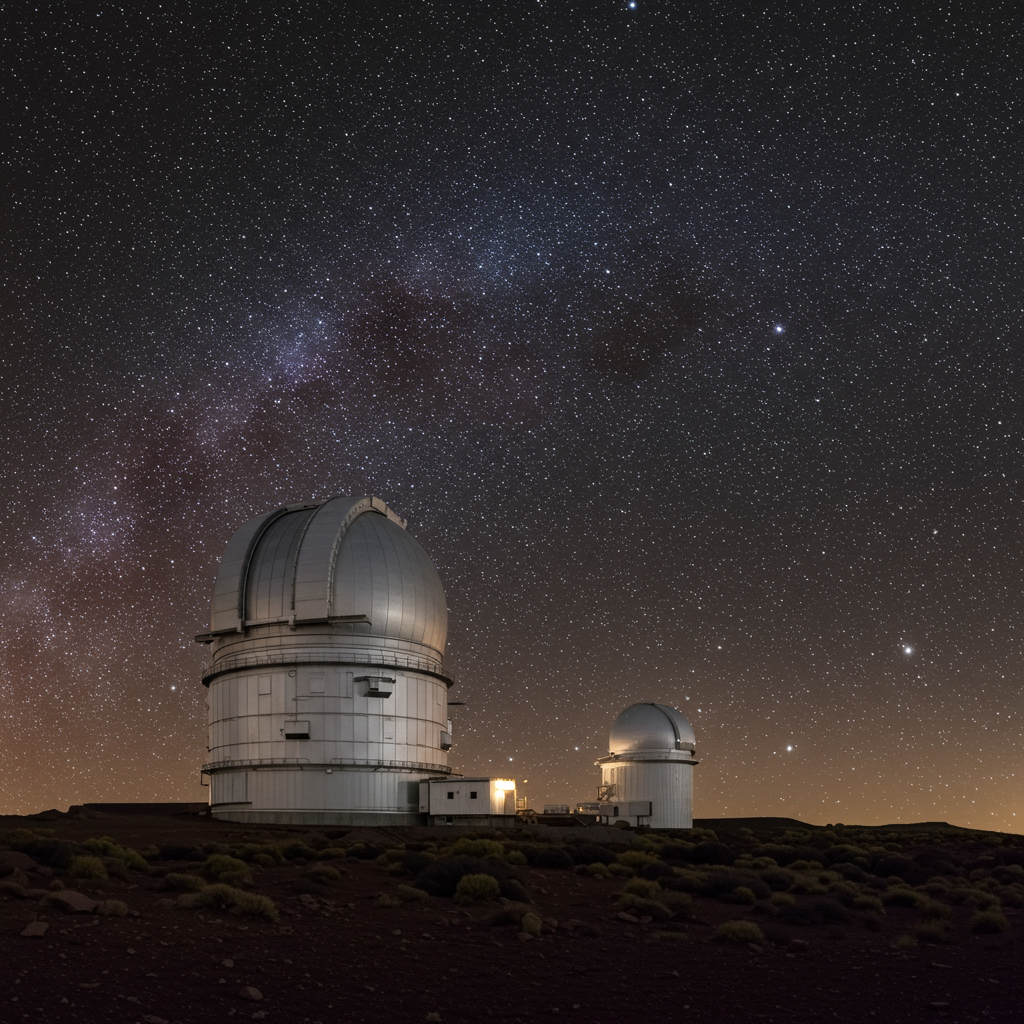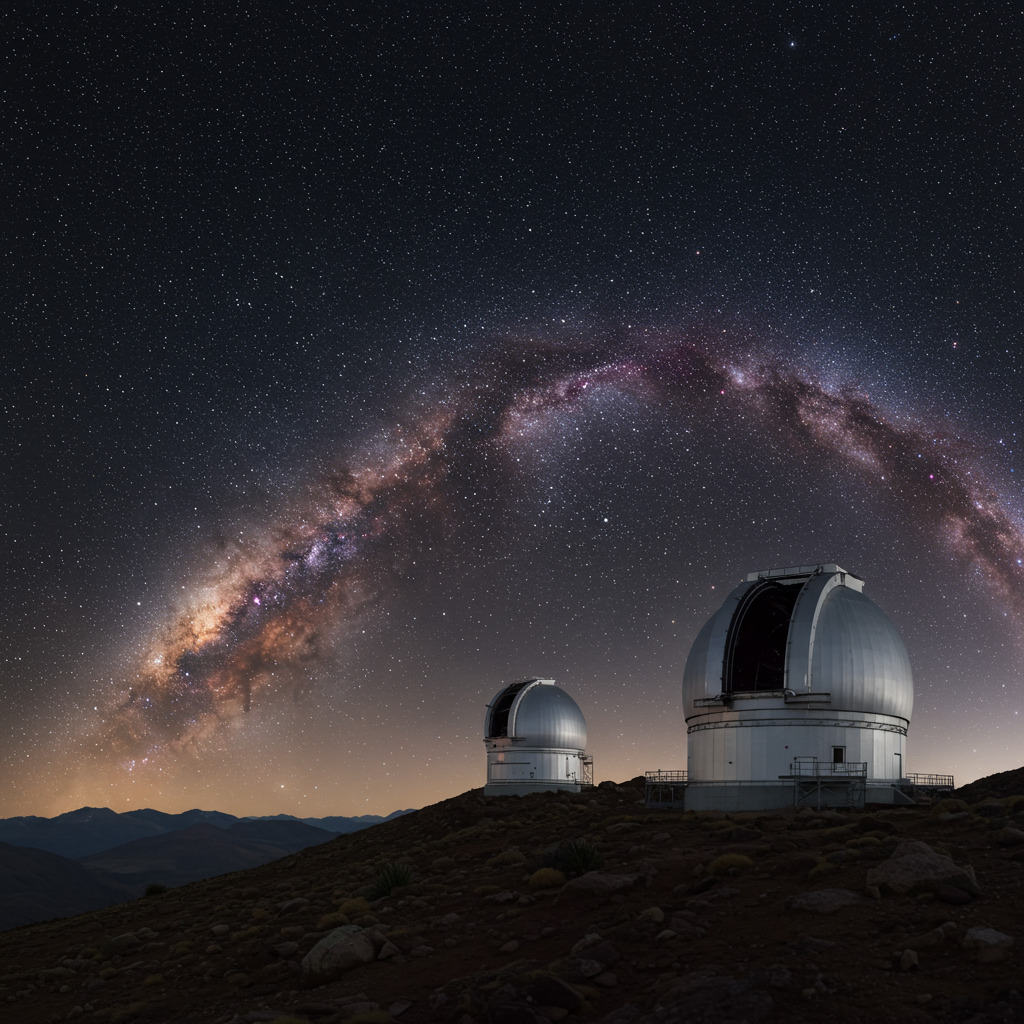Could a rogue space rock striking the Moon unleash a storm of debris capable of jeopardizing our vital satellite network? New research highlights this intriguing, albeit low-probability, scenario involving asteroid 2024 YR4 and a potential 2032 lunar impact. While cinematic depictions of cosmic threats often end with last-minute heroics, the reality of near-Earth objects (NEOs) like 2024 YR4 involves diligent monitoring and complex calculations of potential hazards, even those far from Earth’s surface.
Asteroid 2024 YR4: A Lunar Collision Risk?
Discovered on December 27, 2024, asteroid 2024 YR4 was quickly determined to pose no direct impact threat to Earth. However, astronomers soon identified a different possibility: a potential collision with the Moon in 2032.
Estimated to be between 53 and 67 meters (174 to 220 ft) in diameter – a size comparable to the object believed to have caused the devastating Tunguska Event in Siberia in 1908 – 2024 YR4 carries a calculated ~4% chance of striking the lunar surface eight years from now.
The Impact Scenario: A Debris Cloud of Epic Proportions
If 2024 YR4 were to hit the Moon, the impact would be significant. Simulations suggest it would excavate a crater approximately 1 kilometer (0.6 miles) wide, unleashing energy equivalent to about 6.5 metric tons of TNT. Crucially, according to recent research, this impact could blast an astounding one hundred million tons of debris into space.
This immense cloud of lunar material is the primary concern, particularly for the rapidly growing population of satellites orbiting Earth.
The Study: Assessing the Satellite Hazard
A new paper, titled “The Potential Danger to Satellites due to Ejecta from a 2032 Lunar Impact by Asteroid 2024 YR4,” explores the potential short-term effects of such an impact. Led by Paul Wiegert from the University of Western Ontario, the research, available as a preprint, details the complex dynamics of debris ejected from a lunar collision.
The study simulated thousands of potential trajectories for the asteroid based on its calculated path. Out of 10,000 asteroid clones modeled, 410 resulted in a lunar impact, most likely on the Moon’s southern hemisphere’s leading side relative to its orbit.
A key finding is that while not all 100 million tons of debris would reach Earth, the amount depends heavily on the precise impact location on the Moon. For material to reach near-Earth space quickly (within days), the impact would ideally need to occur on the Moon’s trailing edge relative to its motion around Earth. This allows the ejected material’s velocity to help cancel out the Moon’s orbital speed. The researchers found a significant probability that 2024 YR4 could strike a location capable of delivering as much as 10% of the ejected material quickly to the region around Earth.
Increased Risk in Orbit
Our satellites currently operate within a known environment of background meteoroid impacts. However, the debris from a 2024 YR4 lunar impact would drastically change this picture, if only for a few days. The instantaneous flux of debris could surge to 10 to 1000 times the normal sporadic meteor flux for particle sizes hazardous to spacecraft.
Particles larger than 0.1 mm are considered potentially hazardous to satellites. An influx of these particles could accelerate the aging and shorten the lifespans of orbiting spacecraft. By 2032, the number and total surface area of satellites, particularly in Low Earth Orbit (LEO) where almost 90% reside, are expected to be significantly higher. This increased density means that a lunar impact could potentially lead to hundreds or even thousands of impacts from mm-sized debris across the global satellite fleet within just a few days.
While the research suggests impacts from these sizes are unlikely to be mission-ending, they could certainly cause damage. Larger particles (1 cm or more) pose a much more serious threat, though the study focuses primarily on the higher flux of smaller debris.
Threats Beyond Earth Orbit
The potential danger isn’t limited to Earth-orbiting satellites. As humanity’s presence on the Moon grows, lunar operations could face even greater risks. The ejected debris could pose a serious hazard to spacecraft in lunar orbit, such as the planned Lunar Gateway station. Furthermore, surface operations would be vulnerable, as a vast amount of the ejected mass would settle back onto the lunar surface across a wide area.
The Potential for a Dramatic Meteor Shower
While the primary focus of the research is the satellite hazard, the possibility of a dramatic meteor shower visible from Earth is also noted as a potential outcome. When debris streams from cosmic events intersect Earth’s atmosphere, they can create “shooting stars” as particles burn up.
Real-world events, like the DART mission’s impact on asteroid Dimorphos, have shown that kinetic impacts create debris trails that travel through the solar system. While predictions for the debris from the DART impact reaching Earth suggest the particles might be too small for a visible shower (though Mars might see one), the sheer volume of material potentially ejected from a 2024 YR4 lunar impact opens up the possibility of a noticeable, albeit perhaps brief, increase in meteoric activity. Predicting the exact timing, visibility, and intensity of such a lunar-impact-generated shower, like any debris stream’s passage through the solar system, is complex and depends heavily on particle velocities and Earth’s orbital position relative to the debris cloud.
Understanding the Uncertainties
The researchers emphasize that their analysis involves significant “order of magnitude uncertainties.” Estimating factors like the exact crater size, total ejected mass, distribution of particle sizes, precise impact location, and how efficiently debris reaches near-Earth space all contribute to this uncertainty.
However, astronomers will get another crucial opportunity to observe asteroid 2024 YR4 during its harmless pass by Earth in 2028. This close approach will allow for more precise trajectory calculations, enabling refined predictions of any potential impact site on the Moon and a clearer understanding of the associated debris hazard.
Understanding events like potential lunar impacts and the resulting debris is part of a broader effort to map and understand the cosmic environment we inhabit. Events like the 2013 Chelyabinsk meteor airburst in Russia underscored the importance of monitoring incoming space objects and the value of data from global networks (like military satellites and infrasound sensors) in assessing and mitigating hazards from space rocks entering our atmosphere.
Ultimately, while the odds remain low, the possibility of asteroid 2024 YR4 striking the Moon in 2032 highlights the interconnectedness of the Earth-Moon system and the potential vulnerabilities of our space-based infrastructure to cosmic events. Continued monitoring and research are vital to refine these predictions and prepare for any potential consequences.




